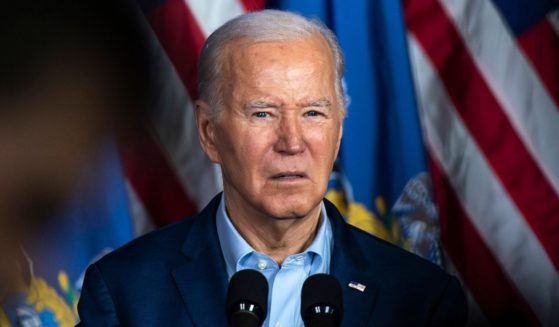California board votes to limit whips in horse racing
ARCADIA, Calif. (AP) — The California Horse Racing Board voted Thursday to severely limit the use of whips on horses in racing statewide and approved medication changes on a smaller scale following the deaths of 22 horses at Santa Anita Park.
The board votes came during a passionate meeting in which a group that represents jockeys argued that the whips were not connected to the horse deaths and that any drastic changes should be delayed for more study.
Board members rejected that idea, with two saying they personally witnessed whips being overused on some of the horses that died at Santa Anita and that if the sport of horse racing is to survive, changes are necessary.
“Going after a horse with a whip when it was obvious that the horse in question had nothing left to give is something I never want to see again,” said Madeline Auerbach, the board’s vice chair.
“We are appointed to take care of racing in California and if we ignore the view of the people of this state, we will all pay a very big price,” Auerbach said. “We won’t be arguing about whips. We will not have the ability to have whips because there will be no need for them because we will have destroyed the industry by being viewed as not taking care of our horses.”
Board chairman Chuck Winner shot back at the assertion the horses’ deaths were unrelated to whips.
“We don’t know that for sure,” he said. “If you watch some of the tapes, the horses that went down in some cases, the crop was being — in my view — overused and could have contributed.”
The board voted to approve limiting the use of whips, also known as riding crops, to matters of safety, such as avoiding a collision. Jockeys would not be able to use the whips to get their mounts to run faster.
If they are found to have broken that rule, they would face fines, suspension or loss of a purse.
The vote to limit whips now goes to a regulatory agency for a public comment period and will have to go before the board again before it can become permanent regulation. That process could take up to six months, according to a board spokesman.
Tom Kennedy, general counsel for the Jockeys’ Guild, urged the board to table the whip issue before they voted, saying riding crops are necessary to encourage and communicate with horses during races, that versions adopted a decade ago don’t leave welts or bruises, and that limiting their use will negatively impact the sport, particularly with Santa Anita hosting the Breeders’ Cup in November.
In addition to limiting riding crops, the board also approved a plan by the owners of Santa Anita and Golden Gate Fields in Northern California to begin phasing out the use of a medication known as Lasix, already banned on race days in every country but the U.S. and Canada.
While many American horse trainers say Lasix is a vital anti-bleeding medication that keeps horses safe, animal-rights activists say it amounts to a performance-enhancing drug and that most tracks in the world do fine without it.
All horses born in or after 2018 will race at Santa Anita and Golden Gate with no race-day medication, including Lasix. That means all 2-year-old horses starting in 2020 and after will race medication-free.
All horses born before 2018 will race at the two tracks owned by The Stronach Group under the same guidelines, but Lasix will still be permitted only at 50 percent of current levels.
Though the board’s vote on Lasix just applies to Santa Anita and Golden Gate Fields, Winner said the matter undoubtedly will be looked at for statewide application in the coming months.
At Santa Anita, just northeast of Los Angeles, 22 horses suffered fatal injuries in less than three months, drawing national attention, angering animal rights groups, prompting protests and leading to the suspension of racing since March 5.
Racing at Santa Anita is expected to resume Friday, though no changes on the use of whips there are immediately planned until the statewide measure goes through final approval.
Santa Anita’s owner spoke during the meeting about how everyone at the track has been affected by the deaths, particularly the most recent one in which a 3-year-old filly broke down just after a half-mile workout as a news crew filmed nearby on March 14. That was the 22nd death at the track since Dec. 26.
“We all witnessed that breakdown and we all felt like we got punched in the gut,” said Belinda Stronach, president of The Stronach Group. “We literally felt sick to our stomachs.”
That’s when she said The Stronach Group knew major reforms were needed. She defended the decision to go after the whips.
“We call it a riding crop because a whip sounds worse,” she said. “When you take a principled stand and make changes for the better and the right reasons … we will end up in a better position.”
An official with People for the Ethical Treatment of Animals, which advocates for the end of horse racing, said at the meeting that if tracks want to stay in business, they should get behind changes to whip rules.
“People inside racing might think that not striking the horse is a radical move but the public sees it as visible and obvious cruelty,” said Kathy Guillermo, PETA’s senior vice president. “They see horses dying and they see horses being hit.
“The racing industry is constantly talking about improving its image to the public. You can’t do that if you keep whipping horses who supposedly love to run.”
___
Follow Amanda Lee Myers on Twitter at https://twitter.com/AmandaLeeAP
The Western Journal has not reviewed this Associated Press story prior to publication. Therefore, it may contain editorial bias or may in some other way not meet our normal editorial standards. It is provided to our readers as a service from The Western Journal.
Truth and Accuracy
We are committed to truth and accuracy in all of our journalism. Read our editorial standards.












